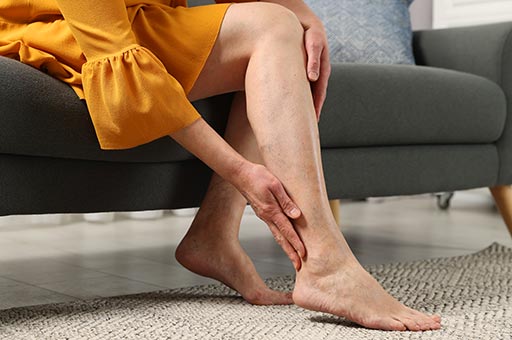
Venous diseases encompass a range of conditions affecting the veins, which are blood vessels responsible for returning deoxygenated blood to the heart. These conditions can range from minor cosmetic concerns to severe health threats. Early diagnosis and treatment are essential to prevent complications and ensure optimal health.
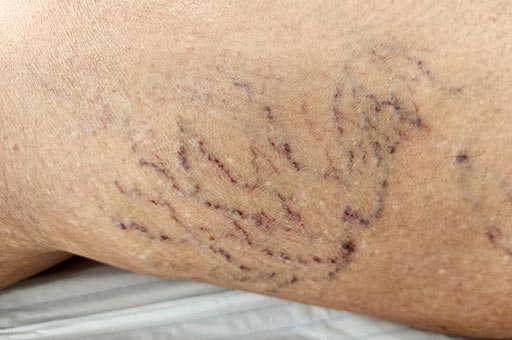
These are tiny, superficial blood vessels that appear red or blue close to the skin surface. While they are primarily a cosmetic concern, they can sometimes cause discomfort or burning sensations.
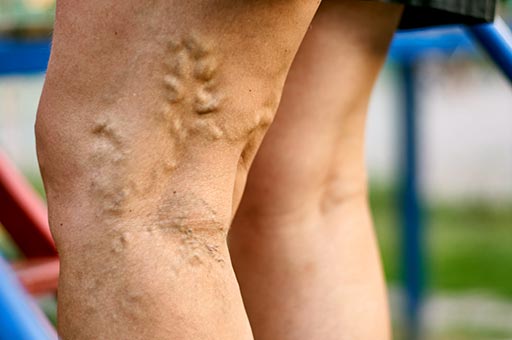
Varicose veins are enlarged, swollen, and twisted veins that can cause symptoms such as heaviness, aching discomfort, pain, swelling, throbbing, itchiness and cosmetic concerns. They result from weakened walls or damaged valves in the leg veins.
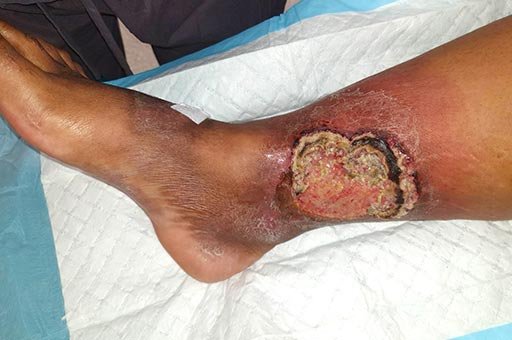
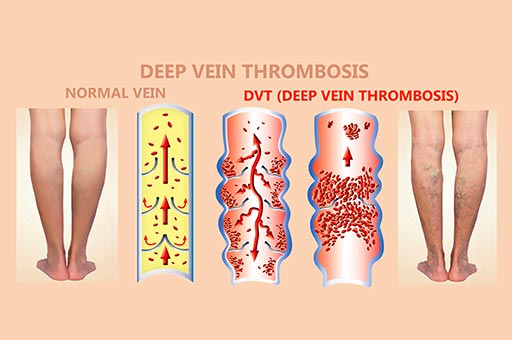
Deep Vein Thrombosis is a condition where a blood clot forms in a deep vein, usually in the leg. It can be life-threatening if the clot travels to the lungs.
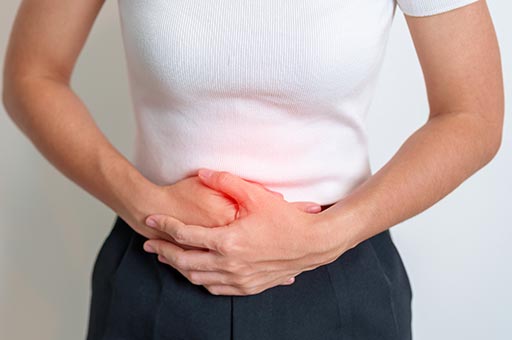
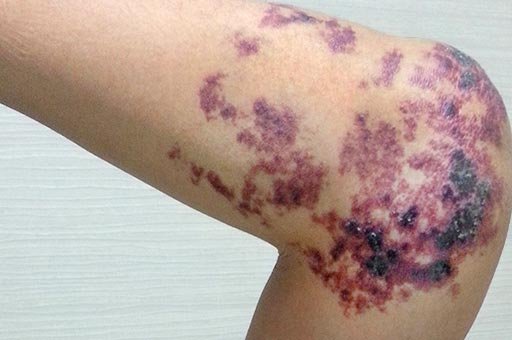
Varicose veins can cause discomfort and aesthetic concerns, but several effective treatments are available. Here are the five most common methods:
Compression stockings are often the first line of treatment for varicose veins. These graduated compression stockings provide 23-32 mmHg of compression around the ankle, helping to relieve symptoms such as heaviness, aching, swelling, and throbbing pain due to venous hypertension (high vein blood pressure). The compression improves venous return and lymphatic reflux, prevents blood from pooling in the legs, and reduces the risk of deep vein thrombosis.
Venaseal is a minimally invasive procedure that uses medical adhesive to seal the vein. This varicose vein treatment method involves inserting a catheter (slim tube) into the affected vein and delivering a small amount of adhesive to close it. The procedure is performed under ultrasound guidance, ensuring precise placement. Venaseal is a popular choice due to its quick recovery time, less pain from the absence of multiple needle punctures for tumescent anesthesia, and a very low long-term recurrence rate compared to other technologies.
ClosureFast Radio Frequency Ablation (RFA) is considered the gold standard varicose vein treatment procedure that uses radiofrequency energy to heat and seal off refluxing thigh veins. After cleansing the leg and placing sterile drapes, the ClosureFast catheter is inserted into the vein, and numbing medication (tumescent anesthesia) is administered. Radiofrequency energy is used to heat and close the vein. Afterward, the leg is wrapped with a compression bandage or stocking to aid in recovery and improve closure rates.
Sclerotherapy is suitable for veins that are not straight enough for ablation therapies. This varicose vein treatment involves injecting a sclerosant solution into the vein, causing it to spasm and clot. This clot is not dangerous and is broken down by the body’s natural processes, leading to the disappearance of varicose veins. Sclerotherapy can also be used to treat smaller reticular and spider veins using a very small needle. It is important to have a surgeon with good vision and steady hands to achieve the best cosmetic results.
Microphlebectomy, or stab avulsions, involves making small incisions to remove bulky varicose veins. This varicose vein treatment procedure is typically performed together with ablation or under local anesthesia if done alone. Tiny incisions are made at bulky palpable varicosities, and special hooks are used to extract the vein through these small incisions. Microphlebectomy is effective for removing large varicose veins and provides immediate results. Post-procedure, compression stockings are recommended to reduce hematoma (blood clot) formation and prevent new varicose veins from forming.
At our vasular clinic, we prioritise patient comfort and effective varicose vein treatment through advanced techniques and personalised care.
We utilise the latest endovenous technology to ensure minimally invasive procedures that provide optimal results with minimal discomfort and quick recovery.
Our clinic is equipped with high-quality, up-to-date ultrasound machines, providing exceptional image quality. All ultrasounds and procedures are performed by Dr. Tay, ensuring consistent and expert care.
Dr. Tay is accredited to operate at all major private hospitals and day surgery centers, giving you flexible options for your treatment location.
We offer the option of local anesthesia for office-based procedures, ensuring minimal pain and no downtime. Patients can walk home after any procedures done, enjoying the convenience and comfort of a quick recovery.
We employ a multi-modal therapy approach, using a combination of techniques to achieve the best outcomes with the least discomfort and time. This includes evidence-based medications and complementary therapies to enhance overall treatment effectiveness.
We offer HIFU (High-Intensity Focused Ultrasound) echotherapy as a completely scarless option for varicose vein treatment. This advanced technology provides a non-invasive alternative, ensuring excellent results without any surgical incisions.
Our commitment to using the latest techniques and providing exceptional care ensures that your experience is comfortable, efficient, and effective.
Varicose veins develop when the one-way valves within the superficial veins weaken or become damaged. Normally, these veins help return blood from the legs to the heart. When these valves fail, gravity causes the blood to reflux (flow backward), increasing pressure within the veins (venous hypertension). This heightened pressure leads to the veins becoming swollen and twisted, forming varicose veins. Once a vein is damaged, it loses its ability to function properly, permanently affecting your health.
Untreated varicose veins will enlarge and become more symptomatic over time, often forcing people to alter their daily activities to reduce pain. Elevated vein pressure can lead to complications such as abnormal bleeding, blood clots, permanent skin discoloration, and open wounds (sores and ulcers). Early varicose vein treatment can help mitigate these complications.
Medications and compression stockings help improve symptoms and delay disease progression, but they do not treat the underlying cause of venous hypertension (faulty refluxing veins). The most effective varicose vein treatments involve minimally invasive endovenous ablation techniques.
Diabetic patients require specialised assessment by our expert vascular surgeon, as they may have undiagnosed peripheral arterial disease (PAD). Although the scars from treatment are very small, they can deteriorate rapidly if you have PAD. Our vascular doctor will advise you on the best minimally invasive techniques suited for you.
Varicose vein treatments are typically done as day surgeries, with patients discharged the same day. Hospitalisation is only required in exceptional cases due to mobility or other medical reasons.
Dr. Tay recommends taking 1 to 2 weeks of rest and hospitalisation leave for optimal scar healing and cosmetic results.
Low-impact exercises like walking are allowed after varicose vein treatment, but avoid strenuous activities for at least a week. Some of Dr. Tay’s patients have participated in half-marathons shortly after surgery, but this is generally not recommended.
38 Irrawaddy Road
#10-33
Singapore 329563
Tel: +65 6041 0933
1 Farrer Park Station Road
#08-14 Connexion
Singapore 217562
Tel: +65 6974 8859
HP: +65 8874 0371 (24 hours)
Email: contact@spectrum-surgery.com
© 2025 Spectrum Vascular & General Surgery